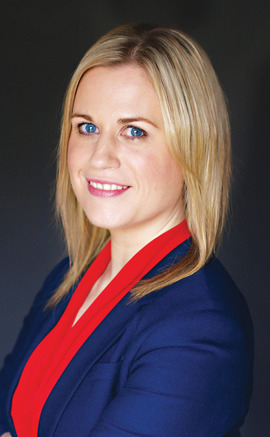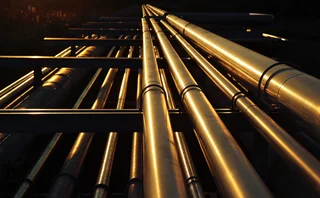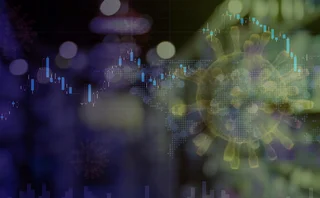
Energy Risk commodity rankings 2017: a return to risk management
Committed dealers reap the benefits of increased interest in hedging and investing

Click here to view the rankings tables
While 2016 saw many corporate players re-engage with price risk management, increased interest from investors also bolstered business for the top-ranked organisations in the latest Energy Risk commodity rankings.
As the industry settled following several years of headline-grabbing exits by major participants, those that remained have reaped the benefits of the surge in trading activity across the global commodities markets.
Commodity producers in particular were reminded of the importance of price risk management in 2016, according to François Combes, deputy global head of commodities markets and global head of metals markets at Societe Generale. This resulted in increased demand for hedging tools among participants in markets such as metals, he says: "2016 was the comeback year for producer hedging business as a consequence of prices reaching levels that are above production costs, but also following on from a period where prices were generally low, forcing some producers to shut down mines or sell assets."
The jolt of falling prices in recent years prompted many producers to refocus on managing price risk, even in 2016 as prices started to rise again. In the oil market, for example, the price of West Texas Intermediate (WTI) reached peaks of more than $100/barrel in 2013 and 2014, but had halved by 2015.
 Jonathan Whitehead, Societe Generale
Jonathan Whitehead, Societe Generale
"One of the problems [the market] had back in 2013 and the first half of 2014 was that producers had become a little bit too relaxed about risk management. When oil is at $100/barrel, [producers are] making a huge fortune and if it drops to $90, they make slightly less of a fortune, but they are still making a fortune," says Societe Generale's global head of commodities markets, Jonathan Whitehead.
Falling prices led many producers to reassess their risk management strategies. "In 2016, we started to see a lot of defaults amongst the producer community... So we definitely saw a much more serious and rigorous approach to risk management [after that]," Whitehead says, pointing out that this was not just the case in the oil sector, but across the board in commodities.
Significant volatility in the European power markets also lead to greater volumes for dealers in 2016. Consumers tried to lock in lower prices in the early part of the year, according to Axpo Group head of trading and sales Domenico De Luca, while producers started to hedge as prices went up towards the end of the year in response to nuclear power plant outages and maintenance schedules in France and Germany respectively. The Swiss power market dealer, which was ranked number one in the European power markets in the 2017 Energy Risk commodity rankings, saw increased demand for hedging tools from both power producers and consumers over the course of last year as a result.
"With very low prices, many industrials and other big companies decided to hedge power forwards medium to long term and, on the other side, when we had a period in which power prices went up again, producers were then very interested in hedging. So, this gave us opportunities on the demand side and on the production side," De Luca says.
The return of investor interest
In addition to demand from physical market participants, investor interest also played a part in driving commodity market activity, particularly in the first half of 2016. In relation to industrial commodities, Robin Bhar, metals analyst at Societe Generale, attributes this to China's rebound and hopes for a stronger US economy under president Donald Trump, combined with significant cutbacks in supply.
"In the year through to October 2016, we saw around $65 billion return to the commodities markets after four years of constant outflows – this was investment money on the long-only side in various commodity products, as well as long/short exposure in other commodity derivatives. That was a key feature of the markets in 2016," Bhar says.
However, the reduction or exit from commodities by numerous banks in recent years – including Deutsche Bank, Morgan Stanley, JP Morgan and Barclays – means these investors have returned to a smaller group of liquidity providers. While UBS exited the commodities business in 2012, it held onto its long-running precious metals business and has continued to serve clients in these markets without interruption.
"In 2015, a lot of banks eliminated or reduced their precious metals arms, while 2016 saw a major return of client interest, particularly in gold and particularly in the first six months of the year. But this wasn't across the entire client spectrum, it was far more focused on the investor side of the gold market," confirms Edel Tully, London-based global head of precious metals sales at UBS, which was ranked number one for precious metals and number two for best overall dealer in this year's poll.
Tully links the success of UBS in the latest rankings to its continued commitment to the market. The dealer's precious metals business model is also particularly well suited to adapting to swings between the various pockets of demand in the market, she adds.
 François Combes, Societe Generale
François Combes, Societe Generale
"You have to be able to tweak your business model to adapt to such market changes and, with a relatively broad-based model like ours, we have the resources to be able to do that appropriately," Tully says. "We probably have a smaller team than other banks, but because we have that specialist knowledge due to our long history in the market, we have clients across the spectrum and in every region. While our US client base is very much geared towards institutional investor clients, Asia-Pacific is more centred on the physical markets, particularly China," she tells Energy Risk.
Societe Generale's Combes agrees that while the market changed, work came back to those that remained committed to commodities once demand from hedgers and investors increased in 2016: "The players that remained through the cycle are now more important and command a higher recognition than before, when the market was oversupplied. Liquidity was definitely lower in precious metals options, and therefore... there was an increased reliance on a smaller number of providers to offer that service."
Increased complexity
Market participants say these demand trends have lead to a steady flow of business, rather than the avalanche seen in previous upcycles, which only encouraged an oversupply of liquidity providers in some markets. As such, those organisations that exited commodities before 2016 are generally viewed as unlikely to return, at least not with the same intensity.
"The retrenchment that took place in 2013 and 2014 [reduced] the excess supply that existed in this business. There were simply too many banks, too much supply," says Societe Generale's Whitehead. While newer players, such as Chinese banks, have gradually entered the market in recent years, he does not predict a wholesale return by western banks. And while these new players tend to have an established commodity finance business, they are generally "playing catchup" when it comes to derivatives, Whitehead argues. As a result, while liquidity is high at the short end of the commodity markets, in plain vanilla transactions, he believes fewer dealers can satisfy the demand for more complex transactions.
 Edel Tully, UBS
Edel Tully, UBS
"If an airline wants to hedge summer 2017, a significant number of banks are willing to provide that – it's easy to do. But if a client wants a five-year natural gas options structure, not as many banks are capable of offering that any more," he explains.
Certainly, the rankings support the argument that the dealers and brokers that have shown an unwavering commitment to the commodities market through boom, bust and everything in between continue to be the most highly rated by market participants.
"UBS has been in precious metals for close to a century, and so that is one thing that separates us from the crowd: our commitment to this market," says Tully. And as the top dealer in the 2017 Energy Risk commodity rankings celebrates 30 years in the commodities business this year, Societe Generale's Whitehead agrees that maintaining this level of commitment is the key to success in the global market.
Click here to view the rankings tables
How the poll was conducted
Between November 1 and December 16, 2016, respondents to the Energy Risk commodity rankings survey were asked to vote for their top three dealers and brokers in any markets in which they had been active over the previous year. The traders that participated were mostly concentrated in the precious metals (26.8%) and natural gas (26.1%) markets, as well as crude oil (23.3%), refined products (23.1%), base metals (21.9%) and power (20.5%). A number of other categories were also included in the poll, such as coal, freight, iron ore, emissions and soft commodities.
The rankings poll is designed to reflect market participants' perception of a dealer or broker based on the overall quality of service they offer their clients. It does not take into account volumes traded in any market. Instead, respondents vote according to a range of criteria including reliability, pricing, liquidity provision and speed of execution.
The rankings are also not designed to present the views of a representative share of the commodity trading community, since the poll is open to any market participants, and the results could be influenced by the efforts of dealers and brokers to canvass their clients for votes. However, the Energy Risk team makes every effort to ensure that invalid votes are excluded from the final results. This includes instances where the same IP address is used to cast multiple votes, when groups of employees from the same desk vote for the same firm, or when one voter chooses the same firm indiscriminately throughout the poll. Voters are also excluded if they do not trade in the market in which they have cast a vote. In addition, categories that do not attract enough votes are excluded from the final results.
The methodology
In order to create the final list of rankings, Energy Risk aggregates the results, weighting them by awarding three points for first-place entrants, two points for second place and one point for third. The top firms in each market are then listed according to the percentage of votes they have accrued, with the winners in each category based on the total percentage of votes per firm. The overall rankings (Best overall dealer and Best overall broker) are calculated by aggregating the votes cast in the individual categories.
Only users who have a paid subscription or are part of a corporate subscription are able to print or copy content.
To access these options, along with all other subscription benefits, please contact info@risk.net or view our subscription options here: http://subscriptions.risk.net/subscribe
You are currently unable to print this content. Please contact info@risk.net to find out more.
You are currently unable to copy this content. Please contact info@risk.net to find out more.
Copyright Infopro Digital Limited. All rights reserved.
You may share this content using our article tools. Printing this content is for the sole use of the Authorised User (named subscriber), as outlined in our terms and conditions - https://www.infopro-insight.com/terms-conditions/insight-subscriptions/
If you would like to purchase additional rights please email info@risk.net
Copyright Infopro Digital Limited. All rights reserved.
You may share this content using our article tools. Copying this content is for the sole use of the Authorised User (named subscriber), as outlined in our terms and conditions - https://www.infopro-insight.com/terms-conditions/insight-subscriptions/
If you would like to purchase additional rights please email info@risk.net
More on Energy
Energy Risk Commodity Rankings 2024: markets buffeted by geopolitics and economic woes
Winners of the 2024 Commodity Rankings steeled clients to navigate competing forces
Chartis Energy50
The latest iteration of Chartis’ Energy50 ranking
Energy trade surveillance solutions 2023: market and vendor landscape
The market for energy trading surveillance solutions, though small, is expanding as specialist vendors emerge, catering to diverse geographies and market specifics. These vendors, which originate from various sectors, contribute further to the market’s…
Achieving net zero with carbon offsets: best practices and what to avoid
A survey by Risk.net and ION Commodities found that firms are wary of using carbon offsets in their net-zero strategies. While this is understandable, given the reputational risk of many offset projects, it is likely to be extremely difficult and more…
Chartis Energy50 2023
The latest iteration of Chartis' Energy50 2023 ranking and report considers the key issues in today’s energy space, and assesses the vendors operating within it
ION Commodities: spotlight on risk management trends
Energy Risk Software Rankings and awards winner’s interview: ION Commodities
Lacima’s models stand the test of major risk events
Lacima’s consistent approach between trading and risk has allowed it to dominate the enterprise risk software analytics and metrics categories for nearly a decade
2021 brings big changes to the carbon market landscape
ZE PowerGroup Inc. explores how newly launched emissions trading systems, recently established task forces, upcoming initiatives and the new US President, Joe Biden, and his administration can further the drive towards tackling the climate crisis
Most read
- Top 10 operational risks for 2024
- Japanese megabanks shun internal models as FRTB bites
- LCH issued highest cash call in more than five years







